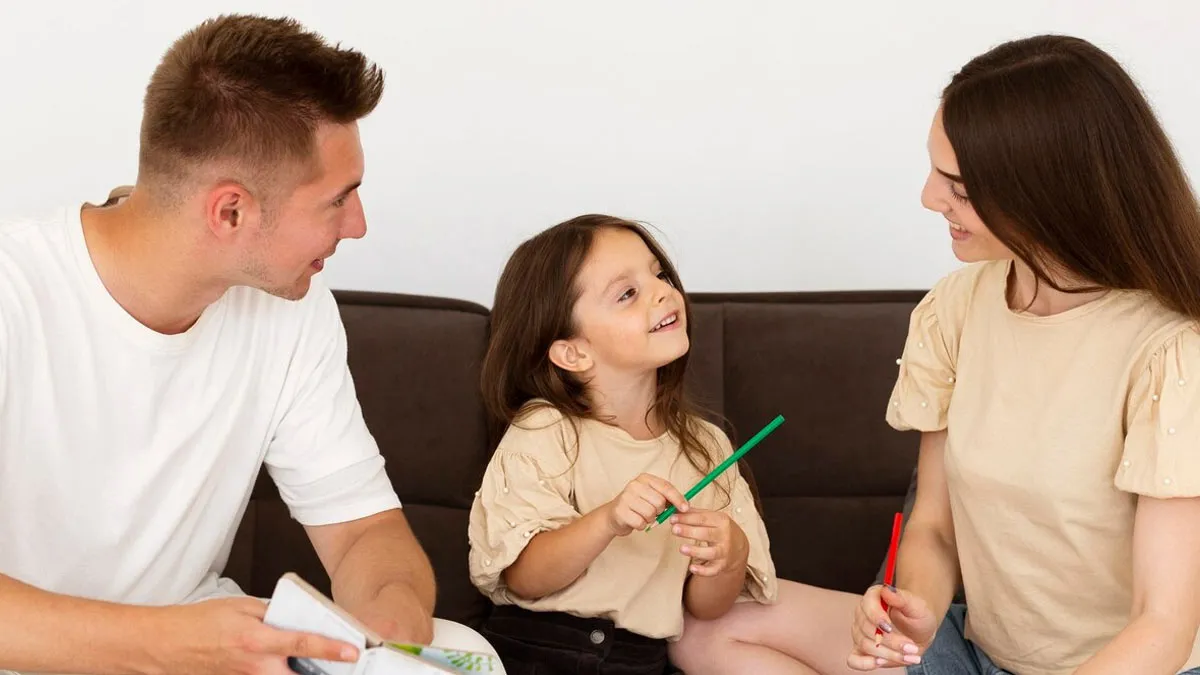
Have you ever wondered how to find the right balance between guiding your child and giving them the space to figure things out on their own? Parenting can be tricky, and it’s hard to know when to step in and when to step back. One approach, called lighthouse parenting, is all about being a steady support in your child's life while allowing them the freedom to make decisions and learn from their mistakes. We spoke to Bhavya Jain, Founder, Thathappinessproject, Industrial-Organisational Psychologist and Integrative Psychotherapist, who explained what lighthouse parenting is, how it helps kids build confidence and independence, and how to handle the challenges that come with it.
Table of Content:-
What Is Lighthouse Parenting?

“Lighthouse parenting is a style where parents offer guidance and support while giving their children the space to make their own decisions and learn from their mistakes. This approach involves setting boundaries that help kids develop independence and resilience. These boundaries will evolve based on the child’s age, personality, and needs,” said Jain.
According to the Newport Academy, lighthouse parenting seeks to balance compassion, protection, security, and independence to raise healthy, resilient children. It aims to create a strong foundation of trust and safety between parent and child while preparing kids for real-world challenges.
"Unlike helicopter parenting, which tends to micro-manage and limit a child’s decision-making ability, lighthouse parenting encourages kids to make choices, fostering their independence. Positioned between authoritarian and free-range parenting, it provides a balanced approach to helping children grow with confidence and self-reliance," added Jain.
For example, a toddler might choose their clothes, while in an authoritative style, strict rules can prevent the child from opening up about mistakes. In lighthouse parenting, an open space for discussion and support is encouraged without judgement.
In traditional Indian households, it is common to see a mix of helicopter parenting and authoritative parenting styles. However, new parents are looking for alternative parenting styles, such as lighthouse parenting that is better for a child’s development.
Also Read: Parenting With Purpose: Expert Explains Why Parenting Boys And Girls Requires Different Approaches
Key Principles of Lighthouse Parenting
For lighthouse parenting to be effective, there are certain key principles that parents need to follow. Here are some listed by the expert:

- Open Communication: Create a space for children to talk openly about their day or mistakes, without fear of judgement. For example, communication could start with a question as basic as: “How was your day?”, encouraging their child to openly talk about their life. Moreover, to know more about their child, the parent can ask questions like “How did that make you feel?”
- Setting boundaries: Parents need to create a space where the child feels loved and warm by their parents, but the child is also aware that certain rules will be set if they misbehave.
- Reasonable expectations: Parents should maintain reasonable expectations from their children. When giving them the freedom to make their own choices, it is also important to be accepting of their choices.
- Giving freedom: In certain situations, parents need to be overprotective and prevent them from getting hurt, but it is important to give the child the freedom to explore, learn from their mistakes, and support them.
- Building trust: Develop a reliable relationship so that children can turn to you for guidance, without feeling over-controlled. For example, when a teen faces a social problem, a lighthouse parent would offer advice when asked but also let the teen figure out the solution.
"Lighthouse parenting gives children the freedom to make their own choices and learn from mistakes, fostering independence, problem-solving, and confidence. It helps them develop internal motivation and a sense of responsibility. For example, encouraging a child to manage their school projects independently, even if it means they might not get the best grade initially. This builds problem-solving skills and accountability," added Jain.
Challenges Parents Face When Adopting Lighthouse Parenting

Following a lighthouse parenting approach can be tricky because it requires one to strike the right balance at all times. Knowing where and when to draw boundaries with your kids can be tricky, and may take a while to understand :
Adopting lighthouse parenting can be challenging as it requires balancing boundaries and expectations. As children grow, rules may need to be adjusted, such as bedtime changes when they become teenagers.
"Parents also need to understand their child's strengths, weaknesses, and emotions to guide them effectively. It can be difficult for overly indulgent parents to step back, and switching parenting styles may take time for parents and children to adjust. Parents may also feel anxious about giving their children too much freedom, especially with big decisions like career choices, but it's important to allow space for independence and learning," explained Jain.
Also Read: Helping Kids Conquer the Fear of Failure: Expert Strategies Every Parent and Teacher Should Know
Role of Emotional Support in Lighthouse Parenting

Emotional support is essential in lighthouse parenting, as it reassures the child that their parents are there for them, even when they make mistakes. "It helps build a safe space for open communication, where children feel comfortable sharing their feelings without fear of judgement. Sometimes, emotional support means giving the child space, like when a teenager doesn't want to talk immediately," said Jain.
Parents can maintain support by actively listening, validating feelings, and offering comfort without immediately fixing the problem. This encourages independence while ensuring the child feels secure and trusted. For example, when a child admits to forgetting to study, the parent can respond empathetically, guiding them to plan for next time.
Implementing Lighthouse Parenting Amid Busy Schedules
Working parents implementing lighthouse parenting need to have boundaries set to establish expectations and check in with their children. It is possible to develop healthy parenting styles with busy schedules, it just needs a little more care and effort. Here are some tips listed by the expert:

- Making available most of your time for the children: Set aside a specific time during the day, such as dinner, to check in with your kids. Even if they don’t share much, remind them that it’s a safe space to talk about anything on their mind.
- More Engagement with the child: Plan weekly activities like cooking together or walking in the park, to spend quality time and connect emotionally with your child. While doing this, the parents can check with the teenagers how their week went and how they felt.
- Setting Boundaries: Establish clear boundaries and expectations that align with the parent’s work-life balance and the child’s needs. For example, set rules for check-ins during specific times when parents are available to listen.
- Prioritise Meaningful Conversations: Dedicate short, focused time each day (20 minutes) to be present and undistracted with your child, ensuring they feel heard and supported.
[Disclaimer: This article contains information provided by an expert and is for informational purposes only. Hence, we advise you to consult your professional if you are dealing with any health issues to avoid complications.]
Also watch this video
How we keep this article up to date:
We work with experts and keep a close eye on the latest in health and wellness. Whenever there is a new research or helpful information, we update our articles with accurate and useful advice.
Current Version